“One does not think during creative work, any more than one thinks when driving a car. But one has a background of years — learning, unlearning, success, failure, dreaming, thinking, experience, all this – then the moment of creation, the focusing of all into the moment” – Edward Weston
Close your eyes and imagine the website for a law firm. Not just any law firm, but one that specializes in intellectual property, copyright and patent law. You’re probably imagining a lot of leather-bound books behind a guy in an Armani suit, sitting on the edge of his desk, arms crossed and looking very serious. Exactly what Kurt Rylander did NOT want for his website. Well, except maybe the serious looking part.
Business owners rely on creative professionals to give them a competitive edge. To create visual elements that convey their identity, corporate culture or simply tell their story. Kurt turned to the talents of web designer Don Elliott and his team of creative professionals. They reached out to see if I was interested in bringing my talents to the project.
We tossed out everything and started from ground zero. Kurt challenged us to do something completely different. He knew what he wanted, but wasn’t sure it was possible. He wanted a full on courtroom brawl, caught mid-action, with each team member engaged in an activity that reflected their real-life extracurricular disciplines. Ju-Jitsu, boxing and rock climbing. Oh, and there had to be a bar in the scene. The literal and symbolic bar separating the spectators in a courtroom from the lawyers, judge and jury, that all lawyers must pass before they are allowed to practice law.
Creativity is a process. It’s not something you can conjure by willing it to happen. We had no idea how difficult it was going to be, what would happen along the way or that it would take nearly a year to complete. But we knew it was something we were uniquely qualified to do and never looked back.
The first thing we had to figure out was the look and feel of the image. The only way to really pull this off was to use a technique called compositing. Photograph the courtroom without anyone in it, then photograph all the elements that would appear in the image and combine them in such a way to give the illusion it was all captured as a single image.
Joel Grimes is one of the most widely recognized masters of photographic composites. I spent a lot of time researching how he creates his amazing illusions and came away inspired that we could pull this off. Kurt threw out another name and I laughed. Dave Hill.
Dave’s an icon in the industry. A trend-setting photographer who’s style is highly sought after and often debated. Everyone wants to create images that look like his. Do a search for his name and you’ll see countless forums debating what software or post production technique he uses to achieve his look. No one knows but Dave himself. What I do know is that regardless of his post production techniques, his images are impeccably lit and masterfully created. Dave Hill’s Adventure Series Exposed clearly shows the amount of post-production that goes into every composite series.
Rather than try and figure out how to be Dave Hill, I decided to be inspired and create my own look. And I must have succeeded because I was recently asked by a photographer what plug-in I used to create the look in this image. I laughed. Not to be mean, but simply because it was a variety of things. Ultimately, as in Dave Hill’s work, it’s the lighting that really makes it work, as well as a good story. It’s got to pull you in and engage you or you’ll never stop to notice. And it’s simply a lot of work, utilizing every incantation, chant and trick I’ve learned over the past 20 years of being a professional photographer.
How much work is involved in creating composite images like this? Dave’s Adventure Series should give you some insight, but here is a great look into the creative process behind Caleb Kuhl’s Wild West Shoot. It’s exhausting. And totally inspiring!
Initially, our team drew inspiration from Italian Renaissance artist Raphael’s famous fresco, School of Athens. Kurt suggested that we consider the Federal Courtroom in Tacoma Washington. It’s a round, showcase courtroom with marble walls and a perfect setting for our composite.
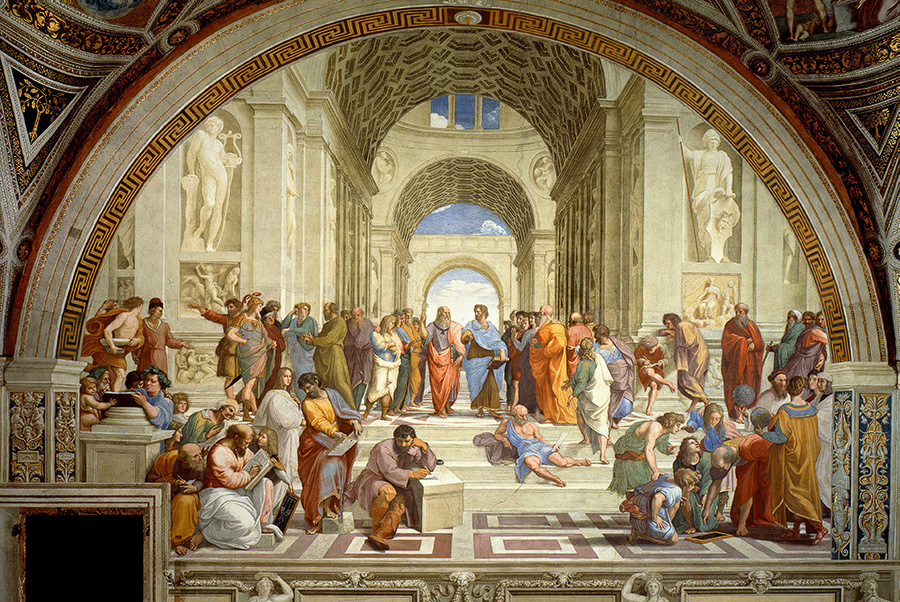
After making a few calls to obtain permission to shoot there, we were denied access for reasons relating to the “gathering and dissemination of information”. An unfortunate circumstance of our modern society and political climate. So, we decided to visit the local Southwest Washington courtrooms in Vancouver, WA. After a personal tour of 6 different courtrooms by Kurt himself, we came away knowing it would never happen. Depressing doesn’t even begin to describe the scene. In my mind’s eye, I imagined something totally different and we were quickly circling the drain of creative inspiration.
As I was driving to relay this setback to Don and his team, I had an inspired moment of clarity. Why limit ourselves by reality? The entire scene was so surreal. Movies create artificial worlds all the time using technology. Why couldn’t we? It was a question worth asking. And as happens so many times with coincidences, Don loved the idea and just happened to know a very talented 3D artist.
These are the initial renderings of our virtual world. The backdrop for our courtroom battle. The arches, inspired by the School of Athens painting and the bar that Kurt insisted be present in the final image. The only thing left to do was make it realistic.
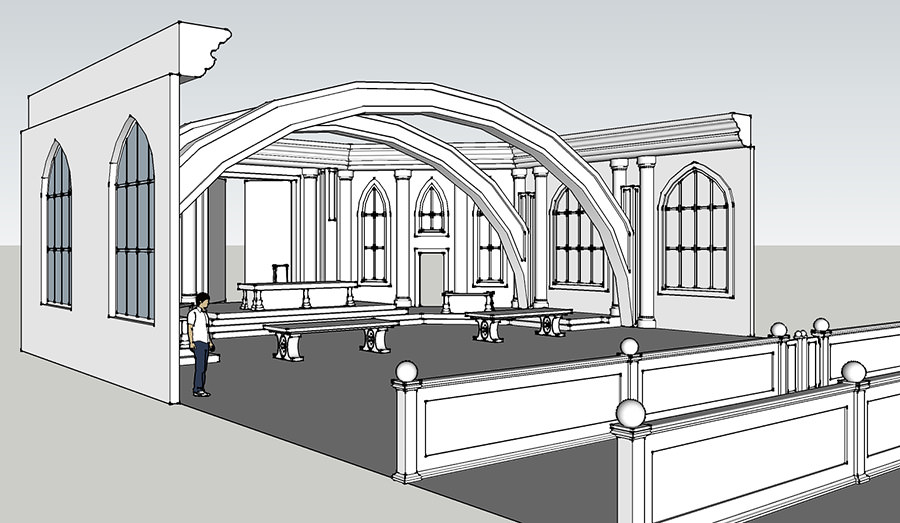
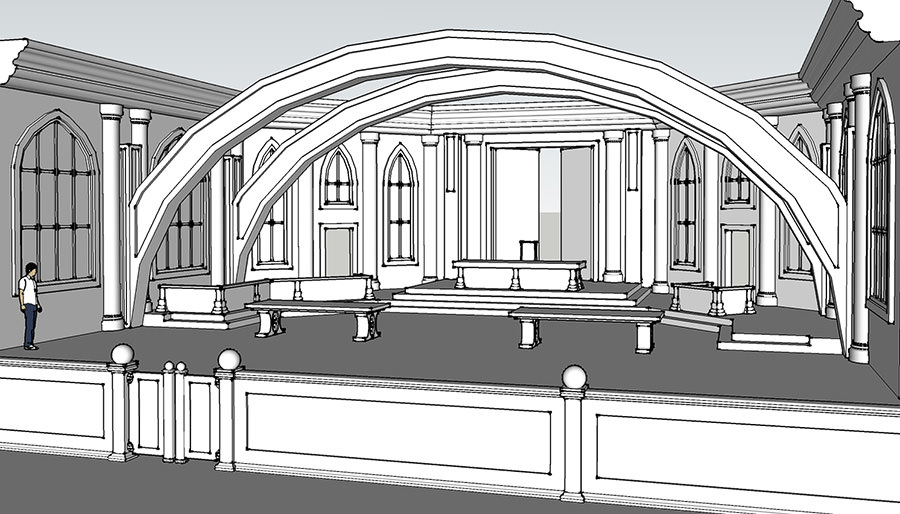
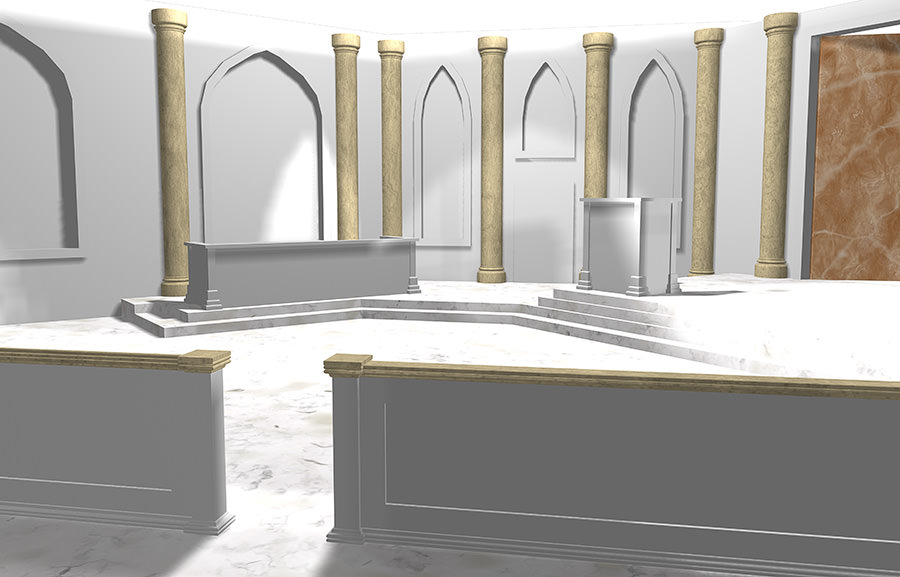
The next challenge was how to photograph the lawyers, judge and jury. The thing I learned from my research, that I feel many photographers miss when trying to emulate Dave Hill’s work, is that his lighting is the key ingredient to his successful photo composites. And that requires experience. You can’t buy software to do it for you, or push a button. You have to have the chops. To make our courtroom brawl look realistic, I had to consider where the light would be coming from in our virtual world. There was a lot of open light, with atmosphere. To accomplish this, I decided on a lighting setup that would encircle my subjects.
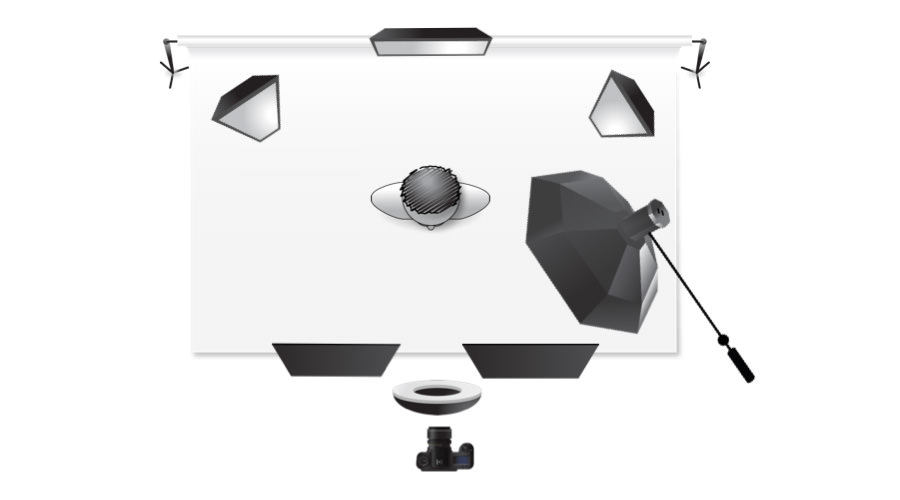
The lighting setup consisted of two strip banks behind the subject, on each side as rim lights. An additional softbox up high from behind to emulate the large source of overhead light in our virtual world and to separate the subject from the background. The main light was an Octabank to camera right and a ring flash to fill in the shadows and add visual punch. I feel the ring flash is an integral element to the final look. The reflectors helped maintain a high key base and prevent lens flare from the back lights.
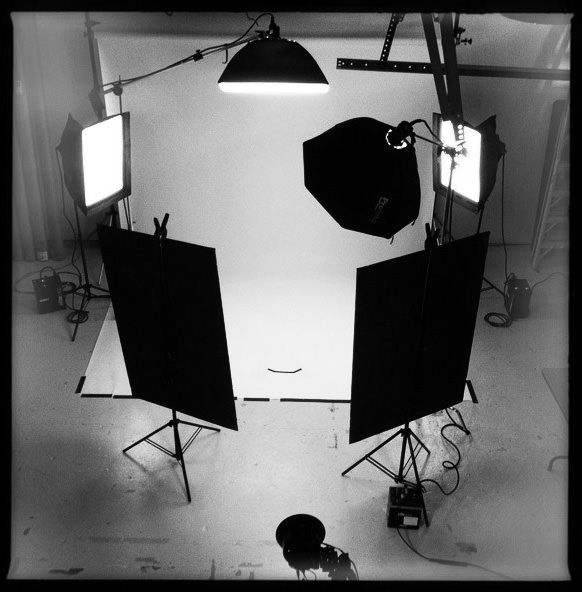
The next phase involved a test day at the studio to make sure our lighting was giving us the look we wanted and easily allow us to drop out the background in post production. We needed to ensure this lighting would give us the realism we needed. The wrong lighting in a photo composite is a dead giveaway that it’s fake and ruins the illusion.
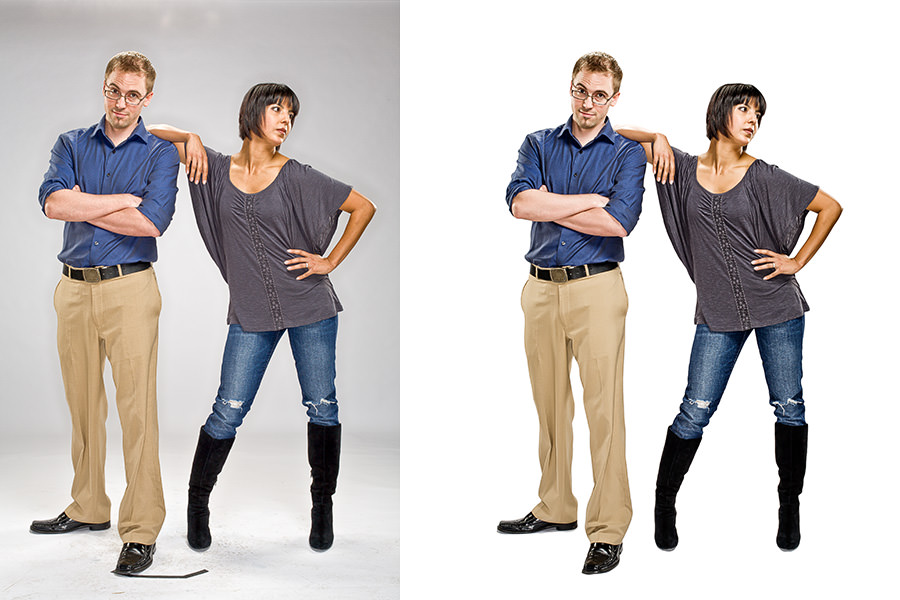
We then took our test shots (Don and his wife Lorena) and dropped them onto a stock photo of a courtroom, similar to our virtual courtroom to preview how realistic the illusion appeared. Once we were satisfied with the direction we were heading, we scheduled a full day to photograph our team of lawyers, judge and jury. And that is where the fun began.
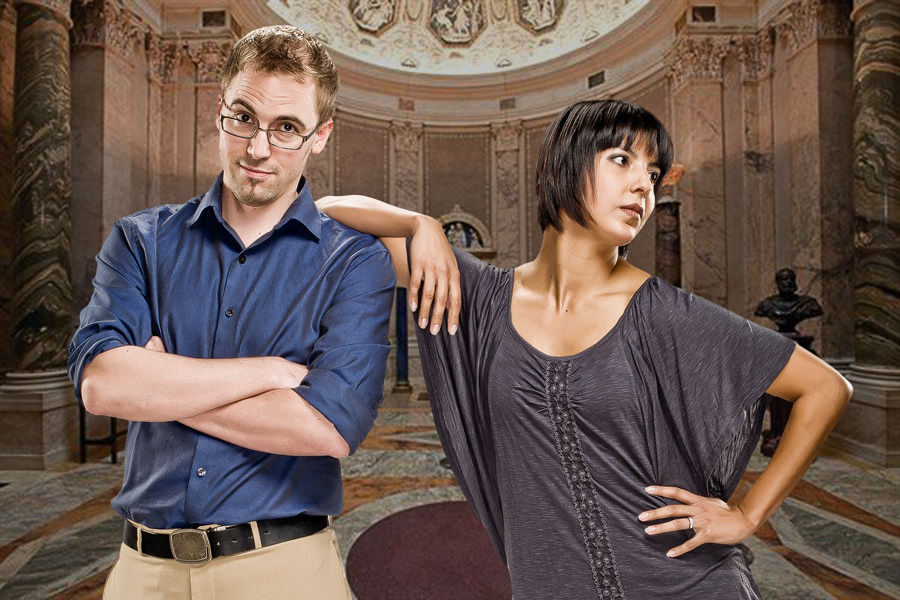
Kurt and his team were fantastic and really got into character. We sketched out where everyone would be in the final image and had a technician on set to take our live captures into a rough composite. This is when the magical creative collaboration between photographer, client and web designer happens. Very challenging, but everyone rose to the occasion. We worked together to figure out ways to make everything look more realistic and compelling. It was hard capturing the energy and drama of a real courtroom brawl, especially in pieces, but in the end, I think it really came together.
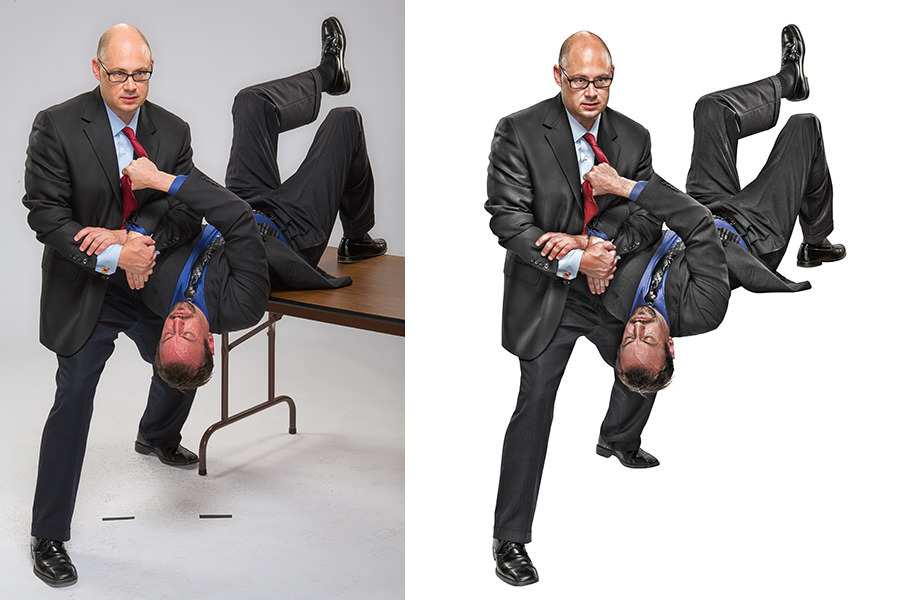
Once we captured all the elements we would use to create our virtual courtroom composite, we began the tedious and mind-numbing post production process. Dropping out all the backgrounds by tediously creating hand-drawn clipping paths and layer masks in Photoshop. Adding realistic looking shadows and trying to figure out the scale of all the elements in relation to each other.
One of the biggest challenges from the very beginning was simply the vastness of the virtual world we had created. It looked dramatic and ominous until we placed our cast into the scene. All of a sudden, it became more about the space than the people and the dramatic action. We quickly had to rethink our objective and work collaboratively in coming up with a new point of view. We really struggled with this one. The focus needed to be on Kurt, his team and the dramatic action. We could literally rotate, zoom in/out of the courtroom with the 3D software and had unlimited choices. This was one of the first composites we presented to Kurt.
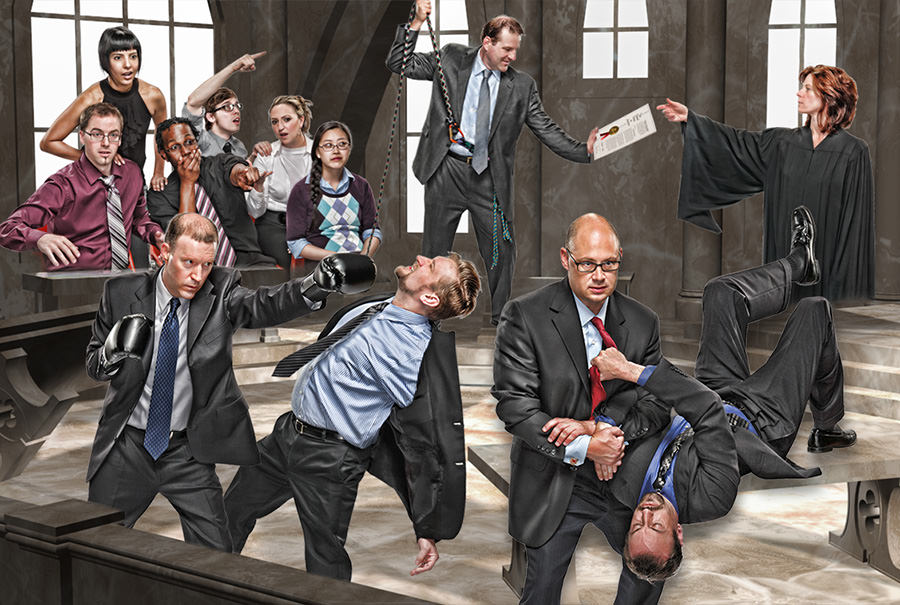
As with anything, if you spend too much time in it, you get too close and it’s hard to be subjective. We spent nearly two months in hiatus letting our minds work on solving this problem. It just didn’t work for some reason and we needed to step away. Of course, Kurt was anxious to get this done, at the same time excited to start using it in his marketing. Much to his credit, he pushed in a very direct way (as lawyers do), but gave us the space we needed to be creative. In the end, Don and I spent an entire weekend working together, sitting in front of the computer reworking the entire composite from the ground up.
We changed the angle, the elements and the texture of our virtual world. We changed the scale of the individual components to make them appear more realistic in relation to each other. Added atmospheric haze to help convey a sense of depth, which was lacking in our first composite.
The final composite represents a year of research, planning, collaboration, and post production. Countless meetings and numerous setbacks. But as Don pointed out, we simply didn’t have the option to fail. We threw ourselves into the creative process and were determined to pull this off.
The actual document has over 50 layers and is massive, taxing the most robust computer resources. I created new techniques to enhance the lighting I used and pushed myself creatively more than I ever have before. This was easily one of the most challenging projects I’ve ever undertaken.
Towards the end, Kurt kept telling me to make it my own. He challenged me to add that little touch that only Randy could bring. I think I accomplished that, but not without great effort and a wonderful team of creative professionals. Ultimately, the praise goes to Kurt for having the fortitude, vision, tenacity and patience to make all of this happen. If you ever have the chance to meet Kurt, you’ll instantly realize this image perfectly represents him. So much so, that you can’t help but smile. I’m smiling right now.
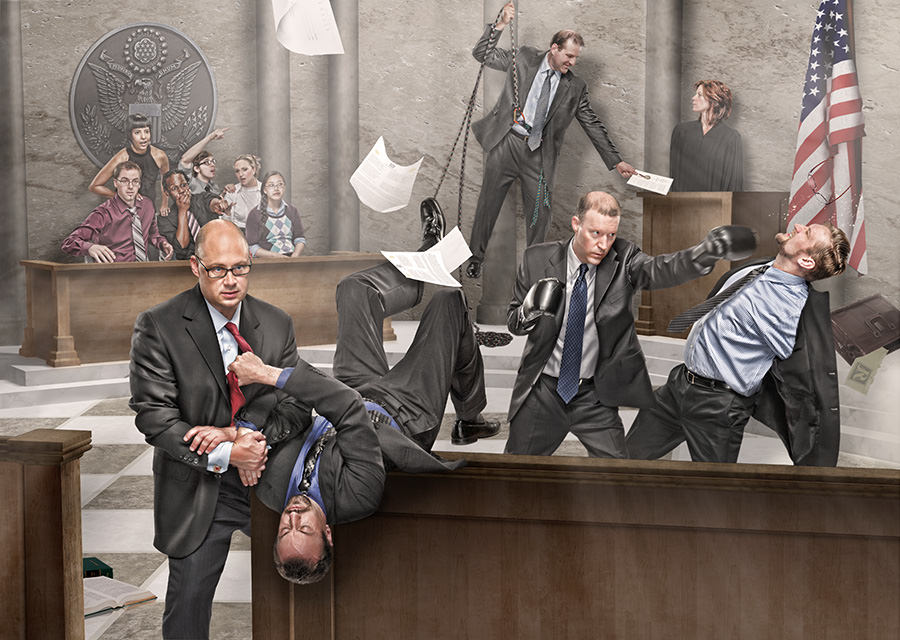
A large 40×30 metallic print hangs on the wall of my studio. And every month month, for the art walk, this image would be the highlight of conversation with visitors. Everyone just loves how irreverent, dramatic and fun it is. Many have commented that it looks like an illustration and are always amazed that it’s actually a photograph. Then they wonder how it was done. In the end, it does exactly what it’s supposed to do. Stop and engage the viewer and bring them into our virtual world.
Special thanks to Kurt Rylander at Rylander and Associates and Don Elliott and his creative team (now at Gravitate Design) for an amazing adventure and creative challenge.
Don’t be shy. Inspire a conversation by leaving a comment. Share your thoughts about this post. Let me know what you think.

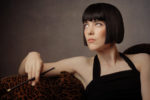
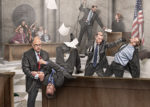

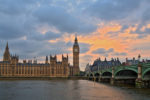
This Post Has 4 Comments
Wonderful, well written article about the process to bring your vision to life. Most people have no idea how many hours of work is involved in creating something like this. Did you happen to track your total time? I imagine the time involved far outweighs the compensation.
Thanks Colleen! Yes, that is why it took me so long to write up this post. Honestly, I could have written an article twice as long, but had to focus on being concise. I was tracking my time, but once the months started flying by, I gave up. It became something all of us were doing for street cred. My hope was that it would inspire similar work.
Great article Randy! This was a really fun and challenging project. You were amazing to work with (as usual) and the result was everything we could have hoped for. Cheers!
Thanks Don! You, more than anyone, know how much time, effort and thought went into pulling this one off successfully. Great team effort!
Comments are closed.